 |
 |
 |
 |
 |
 |
 |
 |
 |






|
Southern
Northwest Coast Weavers
click
on a thumbnail image for a larger photo and catalog number
| 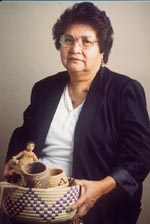
|
CINDY
ANDY Quinault
Cindy
has worked for the Puyallup School District for 28 years.
She is a lifetime member of NNABA's board. As a small child,
Cindy learned to weave from her mother, "not knowing
I was getting educated." She now teaches classes in grade
schools, colleges, and senior centers. She also works with
her daughter and granddaughter.
|

|
|
|
|
| 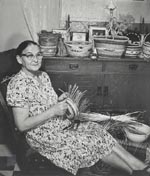
|
BEATRICE
BLACK Quileute
"Grandma"
Black was one of the most beloved elders and
teachers of basketry in western Washington. She had seven
children and 32 grandchildren, but her extended family, who
knew her as "Gram," includes many more members of
the
Quinault, Quileute, Makah, Puyallup, and other tribes. She
shared her knowledge with many people beyond this area, including
a woman named Linda Meyer, who received baskets as gifts from
Beatrice Black over the many years of their friendship. Several
of these baskets were recently acquired by the Burke Museum,
along with an archive of letters from Beatrice Black to Linda
Meyer.
|
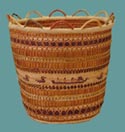 |
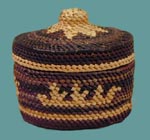 |

|
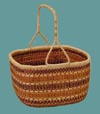 |
|
|
|
|
|
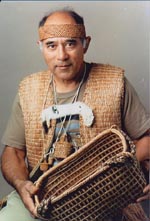 |
ED
CARRIERE Suquamish
Ed Carriere was born and raised on the Port Madison
Reservation at Indianola. He started making baskets when
he was 12 years old. He learned to make clam baskets from
his
great-grandmother who raised him. She was the daughter of
the last chief of the Suquamish tribe. Ed has become an
expert
weaver of several styles of baskets, including twined cedar
bark
and cattail baskets, and coiled cedar root baskets.
|
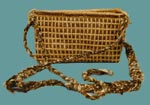 |
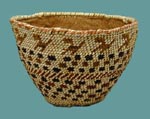
|
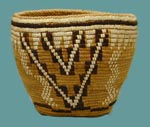
|

|
|
 |
| |
 |
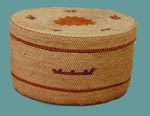 |
MRS.
SCHUYLER COLFAX Makah
In 1885, Schuyler Colfax was a classmate of Daniel W.
Quedessa, who later married Bertha Quedessa.
|
 |
ADA
MARKISHTUM Makah
Born in 1882, Ada learned to work with tules and cattails
from
her grandmother, Dah Qua Dih, who was called Quaddy (Mrs.
Thomas Ward). Ada was a consultant to Dr. Erna Gunther,
former Director of the Burke Museum, who photographed
her
gathering and preparing traditional basketry materials.
Markishtum made baskets for the Burke Museum's travelling
education kits in the 1950s. Her opinions on artifacts
in the
collection are inscribed in the museum's Ethnology catalog.
|
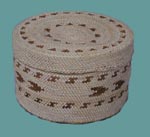 |
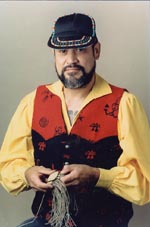 |
SUBIYAY
BRUCE MILLER Skokomish
Subiyay
has woven baskets for over 40 years. He was the founding
president of the Northwest Native American Basketweavers
Association and producer of a documentary film featuring
his two primary basketry teachers, Emily Miller and Louisa
Pulsifer of the Skokomish Tribe. Over the years Subiyay
has taught basket weaving to a large number of people.
He sees basketry as an important way of conveying the
Skokomish cultural identity to future generations.
|
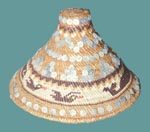
|
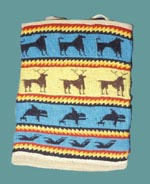
|
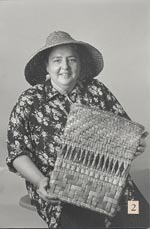 |
SHARRON
NELSON Chinook/Puyallup
Sharron
learned to make baskets from her twin sister, Karen Reed-Peter,
as well as from Anna Jefferson. She has taught
classes for the Puyallup Tribe as well as the Northwest
Indian College. She is proud of her daughter, Denise,
who's been weaving since she was about 7 years old.
|
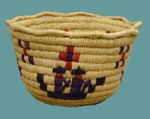
|
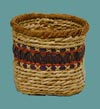
|
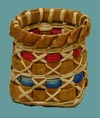
|
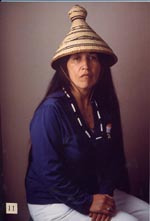 |
TERESA
PARKER Makah
Teresa
is the Educational Curator for the Makah Nation Museum.
She has been weaving baskets for over 35 years. She credits
her own success to her Grandmother's patience, as the
skill was hard won. She incorporates their philosophy
into her own teaching: break the techniques down into
small steps that are easy to remember.
|
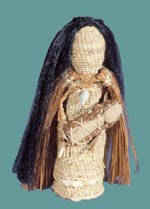 |
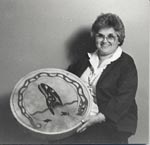 |
NORMA
PENDLETON Makah
Norma has been weaving cedar bark baskets since the early
1960s. She credits her mother, Lyda Butler Colfax, for
her
knowledge of basketry. When Norma was a child, she recalls
sitting and watching her mother weave baskets. Norma has
made
Ozette archaeological replicas for the Makah Cultural
and
Research Center and the Burke Museum. This cedar bark
cradle
is a replica of one excavated at the Ozette village site.
|
 |
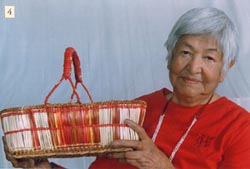 |
HAZEL
PETE Chehalis
Hazel
Pete is a respected elder of the Chehalis tribe. She studied
art at the Institute of American Indian Arts in Santa
Fe, New Mexico, then education and Native American Studies
at The Evergreen State College, and finally did graduate
work in education at the University of Washington. "I
grew up watching my mother, Harriet Pete, and my grandmother
and
great-grandmother do baskets. I learned at a young age
how to gather, clean, and store the basket materials.
This I have passed on to my children, grandchildren, and
great-grandchildren now. In my lifetime I know seven generations
of the Chehalis who have been basket makers." She
is the founder of the Hazel Pete Institute of Chehalis
Basketry. Hazel was a "Master Artist" in 1994-95,
sponsored by the Washington State Arts Commission Folk
Arts Program, and was on the faculty at The Evergreen
State College during 1995-96.
|

|
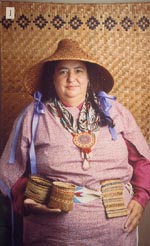
|
KAREN
REED-PETER Chinook/Puyallup
Karen
is the daughter of Benjamin and Lucille Reed. She got
her B.A. degree in General Studies at the University of
Washington.
She learned to weave from her grandmother, Hattie Cross,
and Beatrice Black of Tahola. She has taught basketry
at gatherings throughout the northwest since 1974. She
wove the replica of the Wapato Creek hat for this exhibit.
Her grandmother lived on Wapato Creek.
|
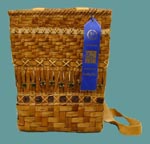
|
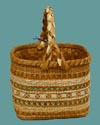
|
|

|
|
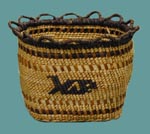
|
|
|
|
_________________________________________________________________________________________________
All material ©Burke Museum of Natural
History and Culture, 2001
theburke@u.washington.edu
|
|
|